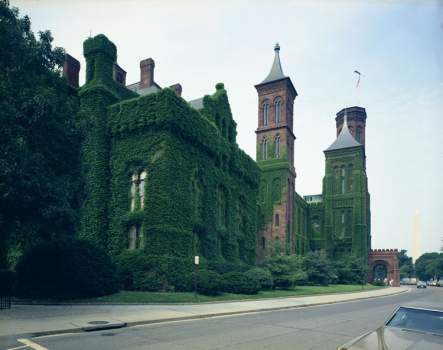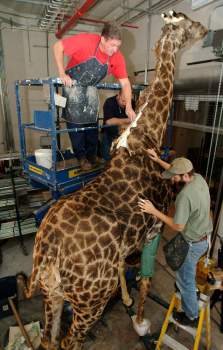






The exterior of the museum is of granite from quarries in Milford, Massachusetts; for the first and second floors from Bethel, Vermont; for the third floor from Mt. Airy, North Carolina; and for the two interior open courts from Woodstock, Maryland. The roof is covered with slate shingles. The final building includes an octagonal rotunda with Doric columns on the first floor and Ionic columns on the second and third floors. Above the three floors are semi-circular clerestory windows and a Guastavino tiled dome with an oculus. Three wings extend north, east and west from the rotunda, providing office space for museum staff, and exhibition space for the permanent collection with abundant light for the exhibitions. An exterior pedimented portico faces the National Mall directly south of the rotunda with fluted Corinthian columns and pilasters.






Further Exploration
- Chronology of the National Museum of Natural History
- Bibliography of the National Museum of Natural History
- Historic Images of the National Museum of Natural History
Related Collections
- National Museum of Natural History Records from the Smithsonian Institution Archives
- Historic Picture Highlights of the National Museum of Natural History
- Collections and Records from the National Museum of Natural History
Other Resources
- National Museum of Natural History Website
- National Museum of Natural History Centennial Website
- National Anthropological Archives and National Anthropological Film Collection
- History of the National Anthropological Archives
- History of the National Anthropological Film Collection
- “History of Department of Invertebrate Zoology,” by Dr. Fenner A. Chace Jr., National Museum of Natural History
- “Spencer Baird and Ichthyology at the Smithsonian, 1850-1900”, Department of Vertebrate Zoology, Division of Fishes, National Museum of Natural History
- “History of Herpetology at the National Museum of Natural History,” Department of Vertebrate Zoology, Division of Amphibians, National Museum of Natural History
- National Museum of Natural History Blog
- "Extinct Monsters: History of Smithsonian Fossil Exhibits," Extinct Monsters Blog


